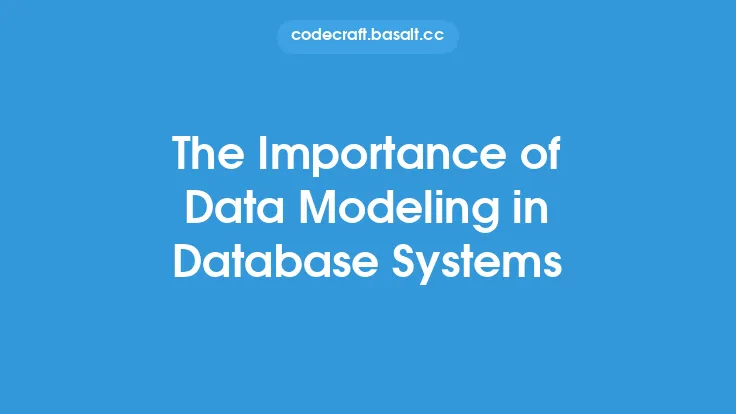Asset identification is a critical component of threat modeling, as it enables organizations to understand what they need to protect and from whom. In the context of cybersecurity, assets refer to any data, systems, or resources that are valuable to an organization and require protection from potential threats. The goal of asset identification is to create a comprehensive inventory of all assets that could be targeted by attackers, including hardware, software, data, and personnel.
Asset Classification
Assets can be classified into different categories based on their type, sensitivity, and importance to the organization. Common asset categories include:
- Data assets: sensitive information such as customer data, financial records, and intellectual property
- System assets: hardware and software systems, including servers, workstations, and network devices
- Application assets: software applications, including web applications, mobile apps, and desktop applications
- Personnel assets: employees, contractors, and third-party vendors who have access to sensitive information or systems
- Facility assets: physical facilities, including data centers, offices, and other locations where sensitive assets are stored or processed
Asset Identification Techniques
There are several techniques that can be used to identify assets, including:
- Interviews and surveys: conducting interviews with stakeholders and surveys of employees to gather information about assets and their importance to the organization
- Network scanning: using network scanning tools to identify systems and devices connected to the network
- Configuration management: reviewing configuration management databases to identify assets and their configurations
- Asset management systems: using asset management systems to track and manage assets across the organization
Challenges in Asset Identification
Asset identification can be a challenging task, especially in large and complex organizations. Some common challenges include:
- Lack of visibility: assets may be hidden or unknown to the organization, making it difficult to identify and protect them
- Complexity: large and complex systems can make it difficult to identify and classify assets
- Dynamic environment: assets can change rapidly, making it essential to continuously monitor and update the asset inventory
- Limited resources: asset identification can require significant resources, including time, money, and personnel
Best Practices for Asset Identification
To overcome the challenges of asset identification, organizations can follow best practices, including:
- Establishing a centralized asset management system to track and manage assets across the organization
- Conducting regular asset discovery and classification to ensure that all assets are identified and classified
- Implementing a continuous monitoring program to detect and respond to changes in the asset inventory
- Providing training and awareness programs to educate employees about the importance of asset identification and protection
- Integrating asset identification into the overall threat modeling process to ensure that assets are properly protected
Tools and Techniques for Asset Identification
There are several tools and techniques that can be used to support asset identification, including:
- Asset management software: such as IT asset management tools, configuration management databases, and asset tracking systems
- Network scanning tools: such as Nmap, Nessus, and OpenVAS
- Vulnerability management tools: such as vulnerability scanners and penetration testing tools
- Threat intelligence feeds: to provide information about potential threats and vulnerabilities
- Cloud security platforms: to provide visibility and control over cloud-based assets
Conclusion
Asset identification is a critical component of threat modeling, as it enables organizations to understand what they need to protect and from whom. By using a combination of techniques, including interviews, network scanning, and configuration management, organizations can create a comprehensive inventory of their assets. However, asset identification can be a challenging task, especially in large and complex organizations. By following best practices, such as establishing a centralized asset management system and conducting regular asset discovery and classification, organizations can overcome these challenges and ensure that their assets are properly protected.





